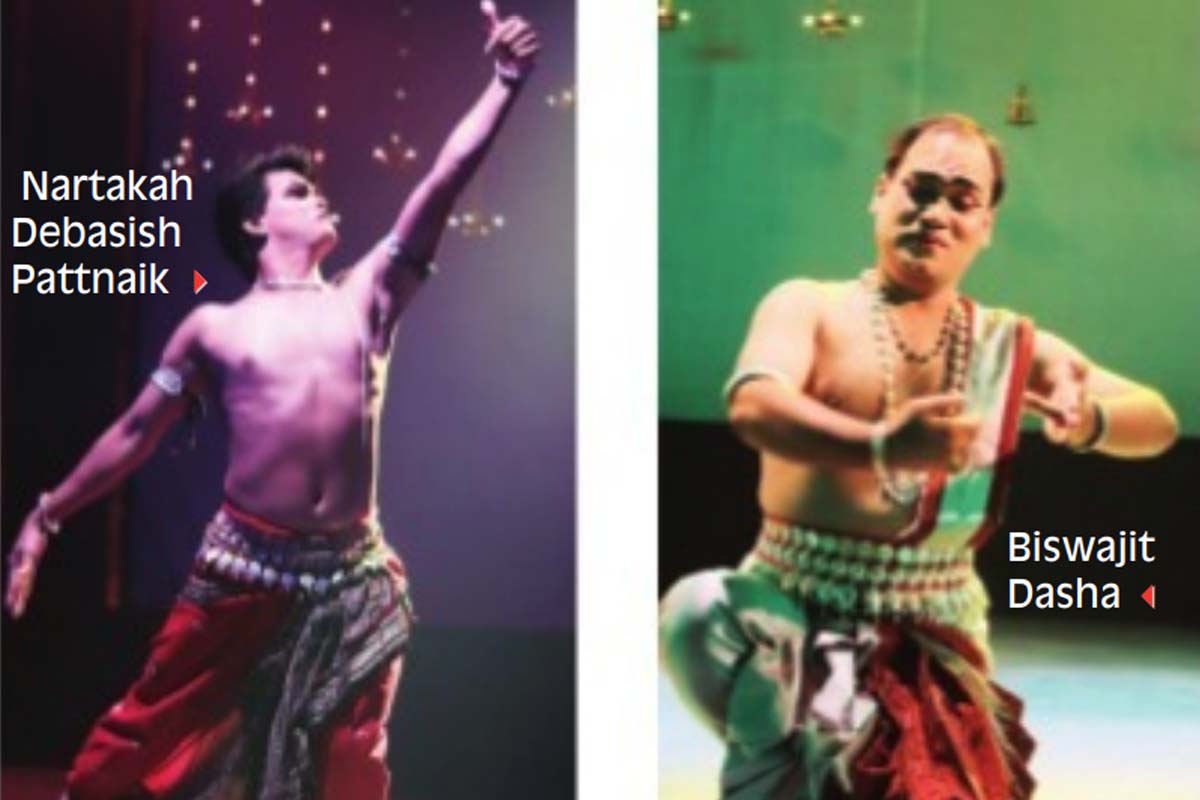Debasish Pattnaiks attempt to promote male dancers and propagate the various dance forms of the country through Nartakah festival is indeed praiseworthy
The 6th Nartakah festival 2019 was a recent happening at Civic Centre in Rourkela. It is know by all that Gotipua is a precursor of Odissi dance and all gurus were mainly male, yet due to numerous factors the Odissi form like many other forms have become female centred. Also it is difficult for a male dancer to make two ends meet while performing Odissi. To choose to be a nartaka (dancer) entails taking up a challenging career. Debasish Pattnaik, who belongs to the younger generation of male dancers, is up in arms to make dance a successful career not only for him but also for others.
As the name suggests, Nartakah celebrated male dancers of various genres of Indian classical dance. It was organised by Odissi dancer Pattnaik and his institute Debnrutyam Studio to promote male dancers as well as to propagate the various dance forms of the country. This year there were many guest performers from different parts of the country. The evening was inaugurated auspiciously with a very brief presentation before the lighting of lamp by Debasish Pattnaik and Manasi Chakraborty— the national cultural director of the studio. Debnrutyam Ensemble also showcased a beautifully coordinated Odissi group dance by the students of Pattnaik along with him.Male Odissi dancer Biswajit Dash from Rourkela established himself with “Srita Kamala kucha mandala Dhruta kundala kalita lalita banamala, Jaya jayadeva hare” from Jaydeva’s Geet Govinda highlighting and praising the qualities of Hari in Odissi style.
Arkadev Bhattacharya of Kolkata, who is well versed in the Kalakshetra bani of Bharatanatyam again selected Jaydeva’s Astapadi, Hari riha mugdha badhuto emote bhakti sringar. A very descriptive piece of physical love play is translated into devotional dance, giving scope to show numerous nuances of expressive dance. The kerthanam“Natanam Adinaar” by Gopal Krishna Bharatiyar, describing the dance of delight of Shiva as Nataraja, at the golden hall of Chidambaram was rather challenging. The Sollukattu swaras “tham thakita thaka jham thaka nam thari kum thari dhim dhimita” was a sheer delight with a flawless rendition in well-tuned body. It celebrated the dance of Shiva who mythically balances both creation and destruction. Bhattacharya however has a good grip over his subject matter.
Kathak dancer Laxminarayan Jena of Bangalore performed “Radha Bhava Madhava”, the slokamof which was written by Ganesha Satabadhan. He excelled in ananda tandava of Nataraja delineating poses to perfection, whether in the enactment of playing the damaru, or holding his right foot aloft as he crushes ignorance with his left foot was a jaw dropping experience. With crisp, fresh and quick movements he won his audience. Especially effective was the act of imitating playing on the mridangam near the foot mike. Complicated parans and tukdasare used along with gat nikas to display the vigour of Shiva. Within the taal of 16 beats different jaathiswere woven into the composition that concluded with a kavitha, describing the instruments and its sound to which Shiva danced. Interestingly even the foot works that is an identity of Kathak dance has given an interpretation of Shiva’s demeanour.
ability in Gath Bhav. The enactment of an anecdote is done purely to the melody and rhythm and very little of lyrics in it. In the performance that followed, the theme is on the true love that Radha had for Krishna came out. Radha waited for Krishna at the designated place and time, but Krishna did not come. True love made Radha wait a little longer only to see the sun set and the moon rise. When her beloved came though late, she expressed her sorrow and beseeched him to become Radha even for a moment to understand how she felt for him. Dejected Radha walked away bereft of her fineries.
Krishna wore Radha’s jewellery and clothes to tentatively transform into Radha and went through the pain and hardship she underwent. The crawling snakes, the roar of the tiger, thunder, lightning, heavy downpour, floods in the river did not deter her from being at the appointed place. Krishna realised the true nature of love that transcended physical into the realm of the spiritual. The artist by merely a flip in the piece of cloth encapsulate the emotions of two different genders, that of Krishna and Radha. It was a unique presentation. Jyothi Mandal presented taal Pancham Sawarito the audience in a befitting manner. Prasanta Kumar Sahoo presented pancha rasa. Of the nine emotions he chose to portray veera (bravery) hasya (mockery) bhayanaka (fear), raudra(anger) and shanta (peace and calm). Episodes from Ramayana were chosen to elaborate emotions which eventually transmitted rasa to the audience.
Pattanaik, artistic director of the studio, shared stage with his students making numerous designs and formations with a mesmerising effect. Having paid their obeisance to lord Jagannath of Puri, they went on to extol the qualities of trinetra Devi, the slayer of demons like Mahisasur in her matri and shakti incarnation. Dasa Mahavidya or the 10 incarnations of Devi gave a great scope to the aspirants to show their stage admirable. The group rendition was remarkable for the sheer joy it created. Odissi group dance by Swaraj Gaurab Pradhan and Rabindra nritya based on Rabindra sangeet, “Mono more meghero sangi” before the curtain came down provided aesthetic joy. Dance is a visual art and so the bane of life is to see a dancer, who has not maintained a physique perfect for dancing.











